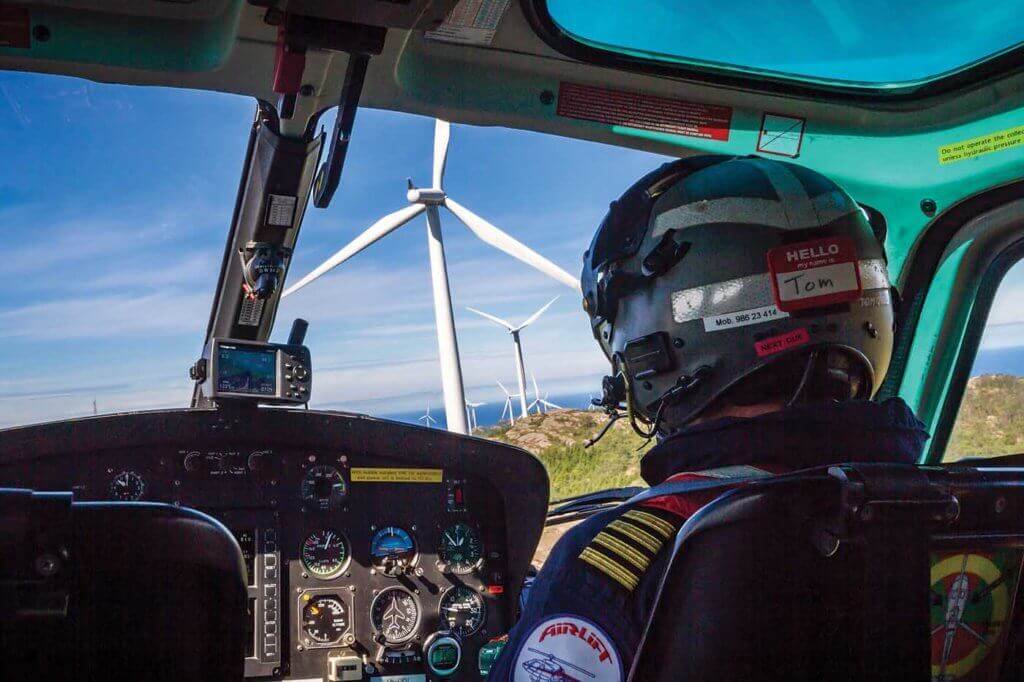The global offshore wind market is experiencing “exponential growth,” presenting huge potential for enterprising helicopter operators, a sector specialist told seminar attendees at Helitech International 2018 in Amsterdam, the Netherlands.

“The offshore wind industry is a growing, viable and sustainable industry — investing in it is investing in the future,” said Khalid Kamhawi, lead of advanced engineering at Offshore Wind Consulting.
However, he said the onus is on helicopter operators to identify and take the opportunities for work. This is partly due to the sector’s lack of maturity, and partly due to the nature of the turbines, farms, and the way they’re operated.
According to Kamhawi, installed offshore wind turbines generated 4 GW of energy in 2015. By 2030, that will have grown to 100 GW. Most of this will be provided by wind farms in Europe, which are expected to provide 60 GW of power by 2030.
This jump in power output is due to an increase in turbine capability as well as the number of farms. Wind turbine generators (WTGs) — the machinery that transform mechanical rotational power into electricity — are growing in size at a rate of 6.5 percent annually, which Kamhawi said would lead to a generator capable of producing 18 to 20 MW by 2030. He said about 650 households can be powered by 1 MW.
In the near term, WTGs that produce 12 MW — such as the GE Haliade-X — will be available by 2023. To put the size of such turbines in perspective, they are about as tall as the Eiffel Tower, with each blade 350 feet (107 meters) long.
“The actual underlying technology is evolving very quickly, but the support system is not there yet,” said Kamhawi. “We need the supply chain to move as fast as the underlying technology.”
And as farms grow ever larger in the size and number of turbines in use, having a robust maintenance program will become increasingly important — and it is in providing support during operation and maintenance that Kamhawi said the majority of opportunities for helicopter operators would exist.
While the energy provided by offshore wind farms is still currently quite expensive per MW/h, it is declining in cost sharply. Kamhawi said he expected it to hit parity with nuclear energy in three years, and then be as cheap as gas within five years. And as the cost falls, investment will increase — leading to ever larger windfarms built further from shore.
For the next five to 10 years, wind farms are likely to be kept close enough to shore to allow the power they generate to be sent directly to shore, said Kamhawi. “After that, you’ll start to develop megafields, which are clusters of arrays, joined together by manned maintenance platforms and super substations that bring them all together,” he added. “This is all good news for your industry, because these farms will definitely have manned structures.”
Helicopters can be used throughout the lifecycle of a windfarm, from initial exploration, through construction to maintenance, but it’s the latter that’s likely to present the largest opportunity for substantial work for the helicopter industry, said Kamhawi.
“If the helicopter industry is able to engage with the offshore wind operators and understand their [operation and maintenance] strategies early on, it can provide better-optimized [support].”









